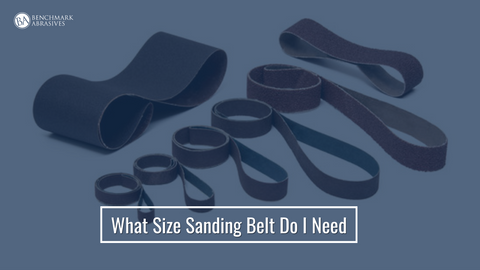
What Size Sanding Belt Do I Need: Determine the Right Size

You might have had a belt sander for a while that needs a replacement belt for various reasons. However, you're not sure what size you need. There are a few ways to determine the right size for your machine and start sanding immediately!
What Is A Sanding Belt?
Sanding belts are versatile instruments. They are frequently employed for tasks like pruning to a scribed line, smoothing, particularly rough surfaces, leveling surfaces (like a replacement board for a hardwood floor), and freehand spherical and cylindrical shaping. Unlike orbital and vibrating sanders, the sanding belt offers linear motion, even with coarse grits.
Metal and wood are worked differently due to the advent of the sanding belt. Sanding belts have eliminated the tediousness involved in woodworking and metalworking, enabling users to complete massive amounts of rubbing and grinding easily. The sanding belt is arguably the most important component of a belt sander. Choosing the right abrasive belt for sanding might be difficult, and choosing the incorrect one can harm the materials and the belt sander.
How Can I Determine The Replacement Size For My Current Belt?
If your sander has a belt, one of the simplest solutions is to use it. A worn-out, outdated one should be cut in half from a circular shape to a straight (linear) one. You'll have to measure it lengthwise, so make sure your cut is straight. The belt's length should then be measured. You can shop for a replacement belt using your current belt dimensions. You will see the dimensions in width x length format while buying online.
How Can You Measure A New Belt If You Don't Have An Old One?
No need to worry if your sander doesn't have an old belt to remove and measure. Another method to obtain the dimensions you require is wrapping a piece of thread, yarn, or other non-stretching material snugly and without overlapping around the sander where the belt normally sits. Measure it end to end after laying it out straight. Secondly, gauge the roller's width where the belt is wrapped. Now that you know the width and length, you may shop for a replacement.
You can use these two techniques to determine the size of a sanding belt.



































































